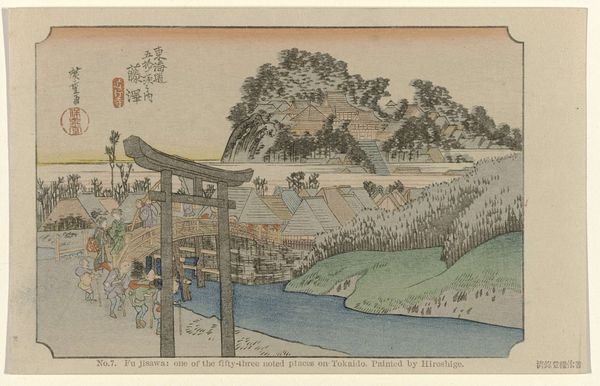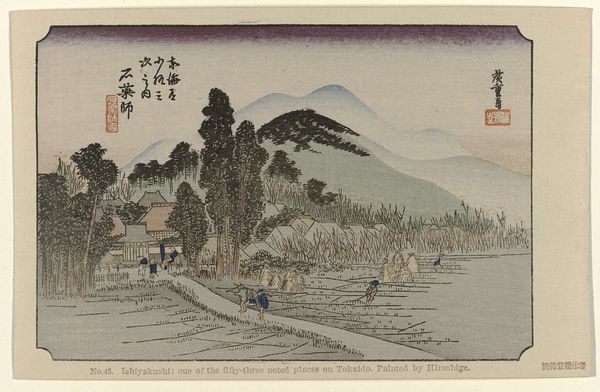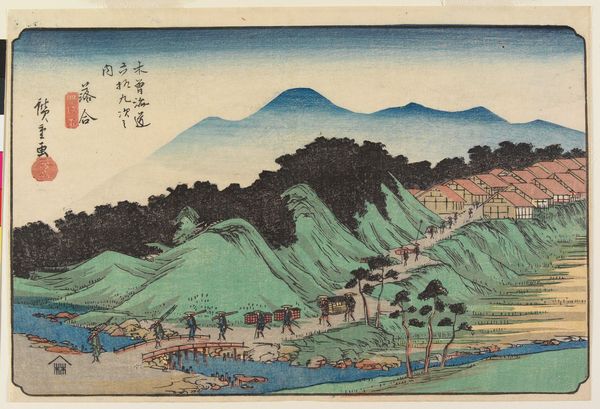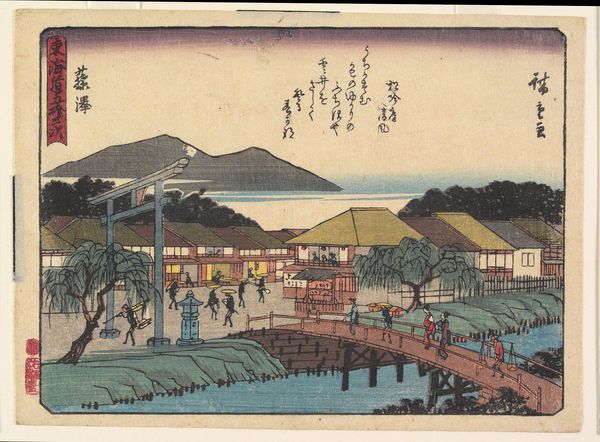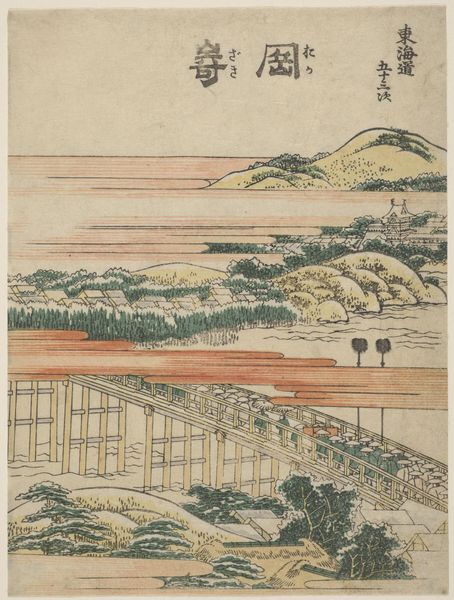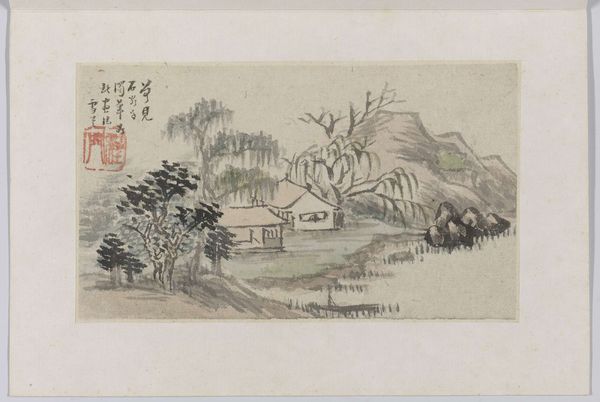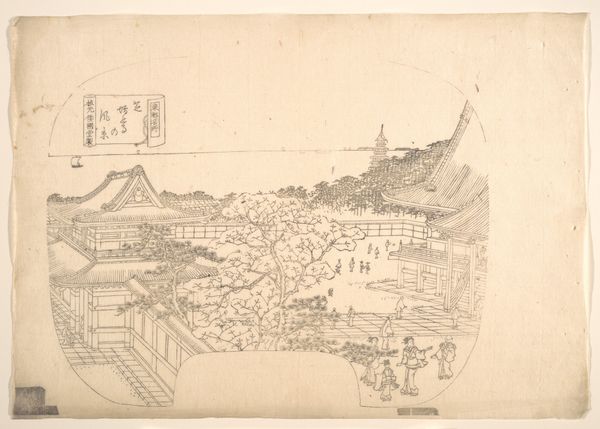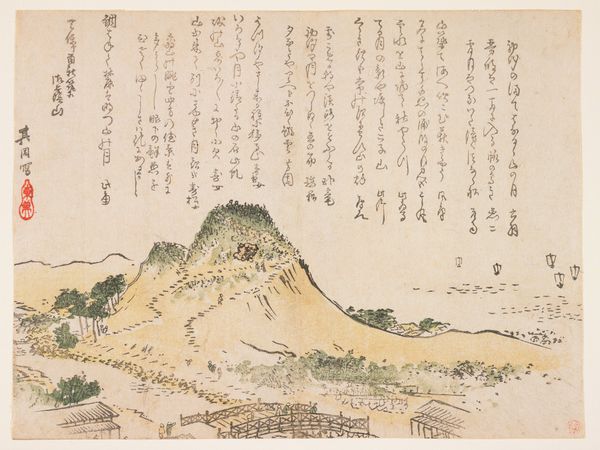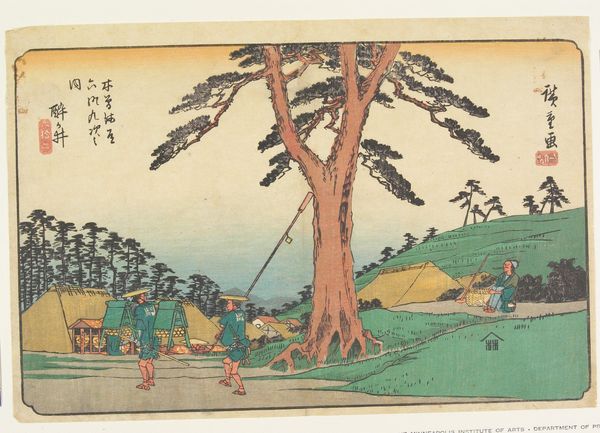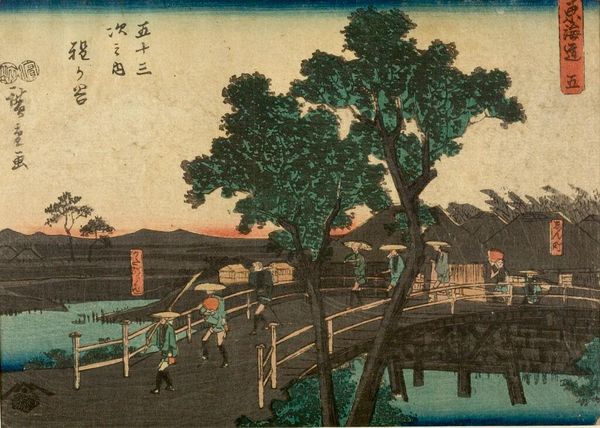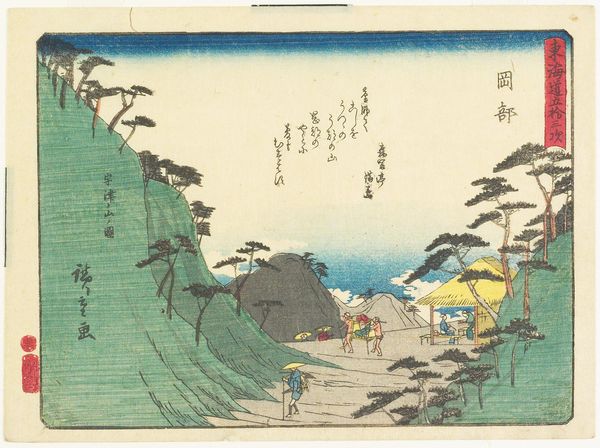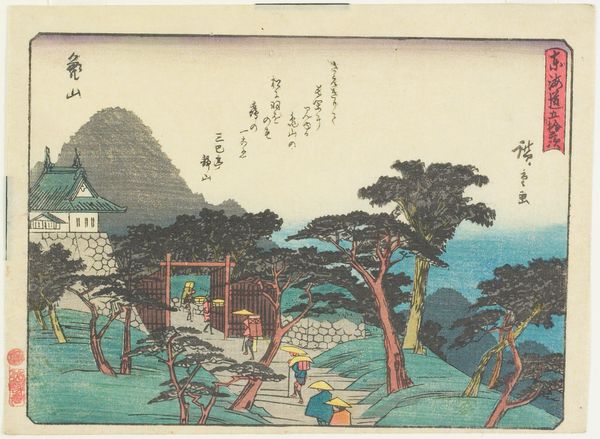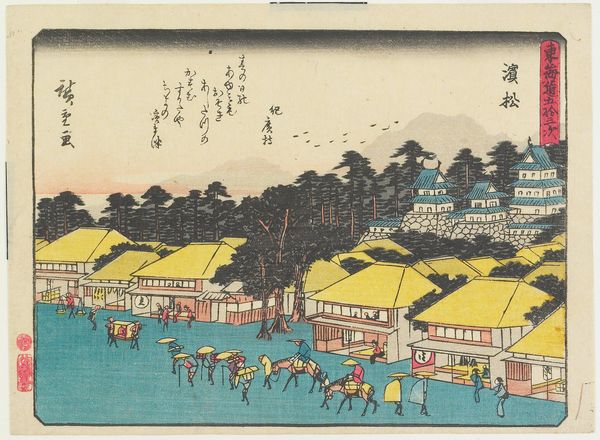
Dimensions: height 161 mm, width 227 mm
Copyright: Rijks Museum: Open Domain
Editor: Here we have Sawa Sekkyō’s "Opklaring na de storm bij de Seido tempel," created between 1815 and 1820. It's a woodblock print with delicate lines and serene colours depicting a temple scene. I am immediately struck by how balanced the composition is, and yet slightly askew. What elements do you see that inform the relationship between form and content in this work? Curator: What I immediately observe is the interplay of spatial organisation and line. Note how the hills don't recede into space, they’re brought forward by those bold, curving lines. Then see how the artist stacks forms one above the other, a spatial recession exists, of course, but consider it is somewhat denied, isn't it? What do you suppose that flattening does? Editor: Perhaps that flattening effect enhances the sense of contained space. Almost like viewing a stage set. What about the relationship between the geometric shapes of the architecture and the organic forms of the hills and water? Curator: Precisely. Consider the dichotomy – this interplay introduces an underlying structural tension, doesn’t it? One may also see how it’s resolved through the repetition of line. Look at the roofs, the lines of the path along the canal, the contours of the hills, how Sekkyo repeats them and unifies them? Editor: I see it now! The unity created by repetition of line brings cohesion to what initially appears to be contrasting. Curator: Yes, and we could even suggest this cohesiveness alludes to the concept of harmony, the scene literally unfolds on multiple levels simultaneously: sky and river, settlement and wildness. And isn’t that something one would hope to find in a temple context? Editor: I hadn’t considered the possibility of philosophical undertones! Thanks to you, I can now see beyond the picturesque subject to understand the sophisticated pictorial structure and its connection to themes of harmony.
Comments
No comments
Be the first to comment and join the conversation on the ultimate creative platform.
